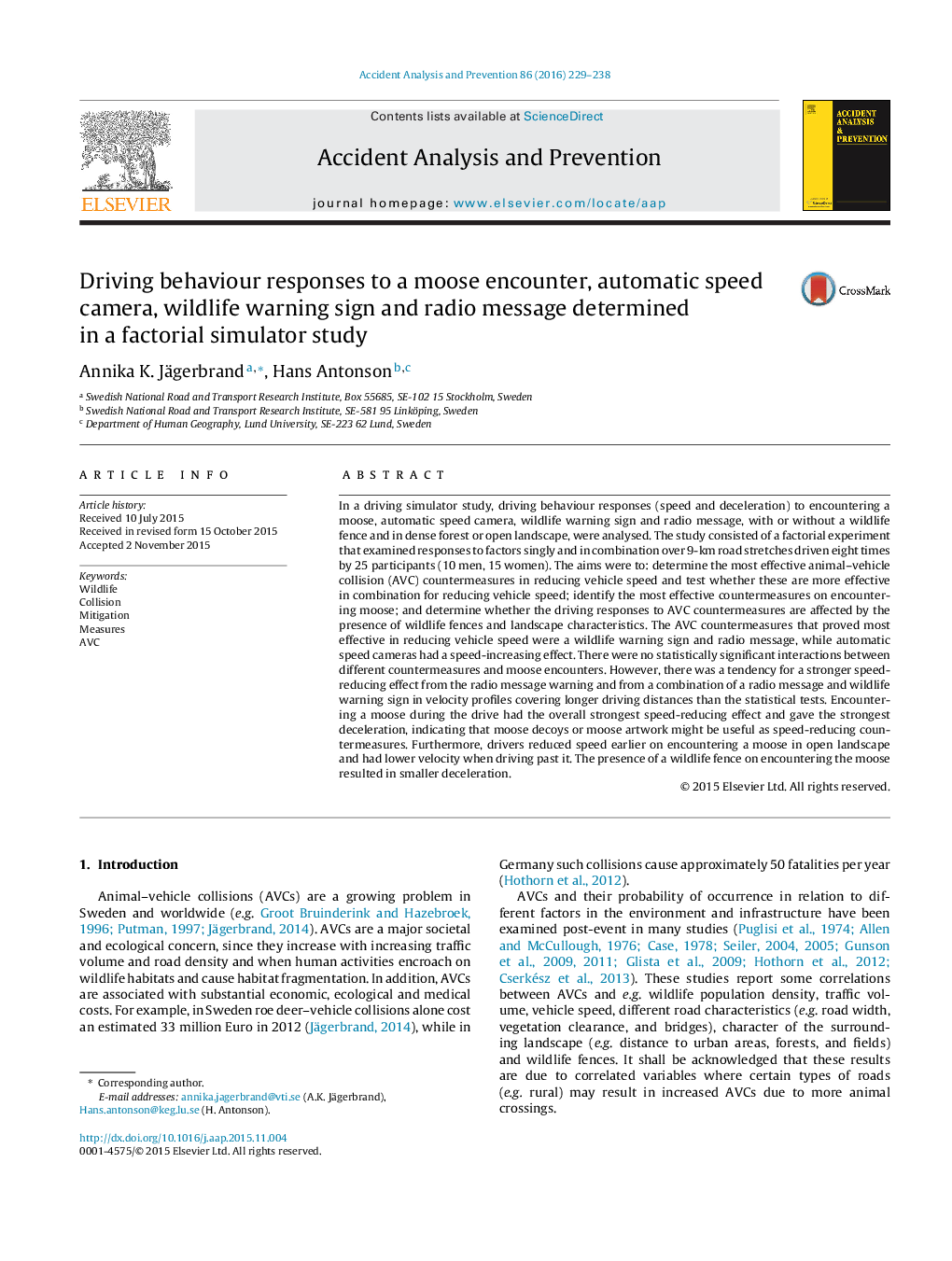| Article ID | Journal | Published Year | Pages | File Type |
|---|---|---|---|---|
| 6965436 | Accident Analysis & Prevention | 2016 | 10 Pages |
Abstract
In a driving simulator study, driving behaviour responses (speed and deceleration) to encountering a moose, automatic speed camera, wildlife warning sign and radio message, with or without a wildlife fence and in dense forest or open landscape, were analysed. The study consisted of a factorial experiment that examined responses to factors singly and in combination over 9-km road stretches driven eight times by 25 participants (10 men, 15 women). The aims were to: determine the most effective animal-vehicle collision (AVC) countermeasures in reducing vehicle speed and test whether these are more effective in combination for reducing vehicle speed; identify the most effective countermeasures on encountering moose; and determine whether the driving responses to AVC countermeasures are affected by the presence of wildlife fences and landscape characteristics. The AVC countermeasures that proved most effective in reducing vehicle speed were a wildlife warning sign and radio message, while automatic speed cameras had a speed-increasing effect. There were no statistically significant interactions between different countermeasures and moose encounters. However, there was a tendency for a stronger speed-reducing effect from the radio message warning and from a combination of a radio message and wildlife warning sign in velocity profiles covering longer driving distances than the statistical tests. Encountering a moose during the drive had the overall strongest speed-reducing effect and gave the strongest deceleration, indicating that moose decoys or moose artwork might be useful as speed-reducing countermeasures. Furthermore, drivers reduced speed earlier on encountering a moose in open landscape and had lower velocity when driving past it. The presence of a wildlife fence on encountering the moose resulted in smaller deceleration.
Related Topics
Physical Sciences and Engineering
Chemical Engineering
Chemical Health and Safety
Authors
Annika K. Jägerbrand, Hans Antonson,
